Full HD 1080P Gaming PC Under $1,000!
The original plan for December of 2013 was to update the $1,000 Gaming PC Build that really hasn’t been updated since December of 2012. Unfortunately as I started working on the build article late last year, I wasn’t too happy with a lot of components that I had to make compromises in, in order to fit the budget. At the time, I wanted to close 2013 with a build that had the highest performance for the dollar, which is why I ended up increasing the budget to $1,200.
Now after posting the build, a number of you requested that I post a $1,000 gaming PC build as well – a system that not only would play games at 1080p, but also had lots of upgrade opportunity down the line for when the budget opens up. While I did end up sending recommendations to those who requested it, I feel like there was enough interest to actually do a dedicated article for a $1,000 gaming PC build. While I know I promised a lot of you that the build would come last month, it’s been hectic here at Custom PC Review with CES and all, so better late than never I guess!
Before we continue on, you’ll notice that we no longer post prices for all individual components. The reason for this is because prices tend to fluctuate quite a bit especially on computer components, and prices I list here will likely be significantly different by the time you read this article. If prices are significantly different and you need help adjusting the build to fit you needs, please feel free to ask for some advice in our community forums. We’ve got a very friendly, very knowledgeable community there who’d love to help you out.
With that out of the way, let’s take a look at what we came up with!
Best Mid-Range Gaming PC Build Component Summary – Budget: $1,000
| CPU | Intel Core i5-4670K |
|---|---|
| Motherboard | MSI Z87-G55 |
| Memory | 8GB Corsair Vengeance DDR3 1600MHz Low Profile |
| GPU | ASUS GeForce GTX 660 DirectCU II Overclocked |
| Case | Corsair Carbide Series 200R |
| Boot Drive | Western Digital Black 500GB Hard Drive |
| Optical Drive | OEM DVD Drive or OEM Blu Ray Drive |
| PSU | Antec EA-550 Platinum 550W PSU |
| OS | Windows 7 64-bit or Windows 8.1 64-bit |
Core Component Details
CPU – Intel Core i5-4670K
As you’ve probably noticed by now, I think the Intel Core i5-4670K is by far the best mid-range to high-end gaming CPU you could get today. Based off Intel’s 22nm Haswell architecture, the Intel Core i5-4670K is a quad core CPU clocked at 3.4GHz with a turbo clock of up to 3.8GHz.
While the Core i5-4670K doesn’t have 6, 8 or 12 cores, the Haswell architecture is about as good as it gets when it comes to single threaded IPC performance. Given that most games on the market aren’t optimized for more than 2-4 simultaneous threads, it’s much more important for a CPU to have that fast single threaded performance rather than a whole bunch of cores that sit idle.
But, that’s not all. For an additional performance boost, we also went with a K series processor, which has unlocked multipliers for easy overclocking. By overclocking the CPU, we can see between 15%-25% performance boost depending on luck and cooling. While we didn’t add a CPU cooler to our build today for budgetary reasons, something such as low cost as the Cooler Master Hyper 212 EVO can easily be added to the system and would allow the Core i5-4670K to reach mild overclocks of 4-4.2GHz without issue.
Motherboard – MSI Z87-G55
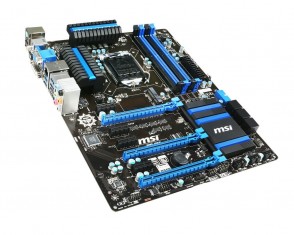 For our motherboard choice this month, we opted to go with the MSI Z87-G55, which is one of the best value motherboards currently on the market. MSI boards in the Intel 6 and 7 series generations were a bit more expensive than similar motherboards in competitor lineups, but with the 8 series chipset, MSI now has a very strong motherboard lineup that offers a lot of features for the price.
For our motherboard choice this month, we opted to go with the MSI Z87-G55, which is one of the best value motherboards currently on the market. MSI boards in the Intel 6 and 7 series generations were a bit more expensive than similar motherboards in competitor lineups, but with the 8 series chipset, MSI now has a very strong motherboard lineup that offers a lot of features for the price.
Based off the Z87 chipset, the MSI Z87-G55 is a LGA 1150 socket motherboard which supports the latest 4th generation Intel Core processors such as the Intel Core i5-4670K. It features MSI’s new Military Class 4 features which include higher quality components such as super ferrite chokes, dark solid capacitors, Hi-C CAPs, DrMos4 mosfets, MSI’s Gen 4 fabric PCB and more for better durability, more precise power delivery and lower motherboard temperatures.
Additional features include support for SLI/CrossFire multi-GPU configurations, 6x USB 3.0 ports (4x in the rear I/O, 2x internal header), 6x SATA 6Gb/s with mSATA SSD support, 3x PCIe x16 slots, and Gigabit ethernet.
Memory – 8GB Corsair Vengeance DDR3 1600MHz Low Profile
Unfortunately in 2013, we’ve seen memory prices go up a bit since they hit rock bottom in 2012, but it’s still not too bad which means our mid-range gaming system will still have access to a decent 8GB of memory.
For our gaming PC build today, we went with the Corsair Vengeance DDR3 1600MHz Low Profile kit, which we’ve had lots of success with over the past couple of years. It’s fast enough for what we’re doing, it looks pretty sweet, it doesn’t cost a whole lot, and it’s very reliable as well. Of course given the nature of computer components things may go wrong, but Corsair offers a lifetime warranty with the Vengeance kits to ensure that these sticks will last you at least until DDR4 or DDR5 becomes mainstream.
Additionally, we also like the fact that the Corsair Vengeance Low Profile sticks use low profile heatspreaders. Low profile heatspreaders may not look as cool as their high profile counterparts, but they do remove the possibility of compatibility issues with monster CPU coolers like the Noctua NH-D14 if you choose to purchase one down the line.
Case – Corsair Carbide Series 200R
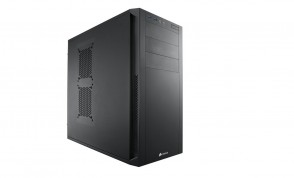 In the budget range, it’s always difficult to find decent computer cases. Manufacturers generally tend to skimp on either features or materials in order to keep prices low, which sucks for those on a budget. However, one case that seems to buck this trend is the Corsair Carbide 200R. With the Carbide 200R, Corsair is capable of offering a case that has all the features you need, yet are still capable of maintaining a build quality that’s far from being plain “cheap”.
In the budget range, it’s always difficult to find decent computer cases. Manufacturers generally tend to skimp on either features or materials in order to keep prices low, which sucks for those on a budget. However, one case that seems to buck this trend is the Corsair Carbide 200R. With the Carbide 200R, Corsair is capable of offering a case that has all the features you need, yet are still capable of maintaining a build quality that’s far from being plain “cheap”.
The Corsair Carbide 200R is pretty much Corsair’s entry level mid-tower case which is capable of supporting ATX and mATX motherboards. Features wise, it contains room for 7 expansion slots, up to 8 fans for tons of cooling capacity, front panel USB 3.0 support, lots of cable management options, and support for GPUs up to 430mm. There’s also room for a whopping eight disk drives and three 5.25″ drives as well for plenty of upgradeability down the line. Additionally, the Corsair Carbide 200R is extremely easy to build into with its completely tool-less design making it a perfect case for first time builders and veterans alike.
GPU – ASUS GeForce GTX 660 DirectCU II Overclocked
While we did consider the Radeon R9 270 for our gaming PC build this month, with the Bitcoin/Litecoin/Dogecoin what have you crypto-currency mining craze making it quite difficult to find stable stocks of AMD graphics cards these days, we’ll instead be going with the ASUS GeForce GTX 660 DirectCU II Overclocked edition graphics card. The GeForce GTX 660 is more than capable of playing even the latest games at high to ultra settings at 1080p resolutions and with ASUS’s factory overclock and DirectCU II cooler, you can expect the card to be not only fast, but relatively quiet as well.
While the GTX 660 is a previous generation graphics card and we’re not huge huge fans of recommending previous generation GPUs when new ones are available, the GTX 660 is unique in that Nvidia has continued the GTX 660 alongside the GTX 760 with the GTX 760 serving as more of the “GTX 660 Ti” equivalent type of product. Those looking for a system with more powerful graphics can step up to a GeForce GTX 760 for about a 15%-20% increase in performance, but it’ll run you an extra $40-$50.
Storage – Western Digital Black 500GB Hard Drive
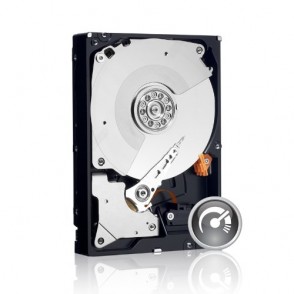 For any new builds these days, my preference is to start off with either a 240GB+ SSD or a 120GB SSD + 500+GB HDD combo. For those with larger budgets, I generally recommend going with a single 240GB+ SSD while those with smaller budgets can get a 120GB SSD and pair that with a 500+GB HDD which serves as a storage drive.
For any new builds these days, my preference is to start off with either a 240GB+ SSD or a 120GB SSD + 500+GB HDD combo. For those with larger budgets, I generally recommend going with a single 240GB+ SSD while those with smaller budgets can get a 120GB SSD and pair that with a 500+GB HDD which serves as a storage drive.
Since our budget was limited in this case, I opted for a single WD Black 500GB hard drive. The WD Black is that it’s one of the fastest consumer 7,200 RPM hard drives on the market and it also carries a 5-year warranty, so short of a prosumer or enterprise 10,000RPM+ hard drive, the WD Black is about as good as it gets for a traditional spinning disk. That said, if you do have the budget left over, I’d definitely recommend picking up a Samsung 840 EVO SSD. The Samsung 840 EVO is a great SSD that’s not only a strong performer, but it also carries Samsung’s tier 1 reliability and extremely competitive pricing, generally retailing in the $0.60-$0.65/GB range.
Now the reason why I decided to compromise the most on storage in order to fit the budget is because storage is probably the easiest component to upgrade. Simply purchase a new SSD, clone the original hard drive, and you’re good to go. You can even use the hard drive as a storage drive for games, pictures, or movies once the upgrade is complete.
Optional Components
Some readers have expressed interest in monitor, speaker, mice and keyboard suggestions, so we’ve also started including some recommendations for these items as well. I won’t be explaining the choices as these optional components are quite dependent on the purpose of PC (For example, someone serious about audio may end up going with something like an Audioengine 5+ paired with an ASUS Xonar Essence STX), but here are some suggestions that are a good fit for this build based on the system’s budget.
| Monitor | Dell E-Series E2414Hr 24-inch Monitor |
|---|---|
| Sound Card | Creative Sound Blaster Z |
| Speakers | Logitech Z623 |
| Headset | Razer Kraken Pro |
| Mouse | Razer DeathAdder 2013 |
| Keyboard | Razer BlackWidow Ultimate |
Remember, if you have any questions, need some help, or need to fit the build into your budget feel free to visit the forums! Myself, or the community will be more than happy to help you out with your own custom build or answer any computer questions you may have. If this build doesn’t fit your needs, be sure to drop by our Computer Builds section to find more computer builds. If you spot any issues with our build such as GPU/case incompatibilities, cooler/case incompatibilities, etc. please let us know as well so that we may update the article.
Also, be sure to join us on Facebook, Twitter, Google Plus, or YouTube to be updated on the latest news, reviews, tutorials, custom computer builds, and more!

![Best Mid-Range Gaming PC Build Under $1,000 [February 2014]](https://www.custompcreview.com/wp-content/uploads/2012/11/corsair-200r-1.jpg)
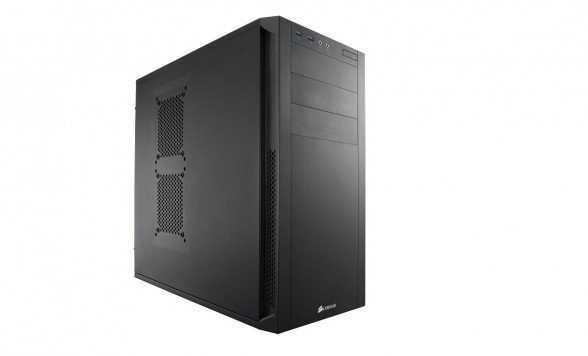
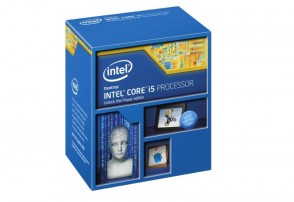
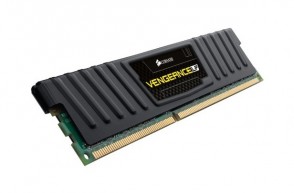
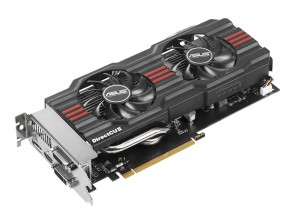
![Best Haswell Gaming PC Build Under $1500 [June 2013]](https://www.custompcreview.com/wp-content/uploads/2013/06/corsair-carbide-300r.jpg)
![Best Price/Performance Gaming Build Under $1,500 [February 2012]](https://www.custompcreview.com/wp-content/uploads/2012/02/cm-haf-932.jpg)
![Best Photo/Video/3D Workstation Computer Build Under $1000 [August 2012]](https://www.custompcreview.com/wp-content/uploads/2012/06/antec-one-gaming-computer-case.jpg)
Honestly 1k for this build? You can do a lot better for the same price including a nice 40″ 1080p TV for the couch playing sessions.
Would you care to elaborate?
With the processor and GPU at ~$200 each and the motherboard at another ~$130, memory at another ~$80, PSU at another ~$80 and Windows at another ~$90-$100 and that’s not counting the case, HDD/SSD and ODD, I’d love to know how you’d fit a TV into the budget.
I did my own version of this and it came in at $935 with better parts. Were I to drop the specs in the neighborhood of what you have listed I’d come in closer to $700 and be able to grab a 40″ TV from Walmart with HDMI.
Like I said, feel free to elaborate if you think you have something better. What better parts are you referring to?
Once you price out the build I have above, just the mobo, cpu, memory, gpu, psu, and a copy of windows will run $700 today and that’s not counting the HDD/SSD, case and ODD. If you can get the whole thing for $700,I’m sure a lot of the readers here would love to hear about it.
Challenge accepted.
Sure if you swap for an AMD platform it’ll be slightly cheaper. You’ll also lose a ton of single thread IPC performance in the process and risk having the CPU be the bottleneck if you decide to upgrade the GPU significantly down the line.
I’d rather have my GPU be the bottleneck rather than the CPU. Upgrading the GPU is as easy as dropping a new one in or dropping a second one in for SLI while upgrading a CPU/Mobo is much more difficult.
It’s all personal preference of course. I’ve done AMD builds in the past and I’ve done Intel builds in the past. IMO though at $1,000 or above I’d go with an Intel build. But that’s just me.
This is one of those things that I’ll argue until the day I die. Intel is great at processing numbers. Always have been. The Multimedia processing that AMD throws in their processors can’t be beat. So if you’re playing a game that relies on Excel the sure Intel makes perfect sense but for sheer gaming, I’ll always go AMD.
I hope this all fits. Again, it’s not item for item but it’s approximations. Especially for someone shopping around. So here’s what you priced out in your guide for $600
intel core i5-4670 MSI Z87 Combo: $249.08
http://www.microcenter.com/product/414820/Z87-G41_PC_Mate_Socket_LGA_1150_ATX_Intel_Motherboard
Crucial Ballistix Sport 8GB (2 x 4GB): $74.99
http://www.microcenter.com/product/382101/Ballistix_Sport_8GB_DDR3-1600_(PC3-12800)_CL9_Dual_Channel_Desktop_Memory_Kit_(Two_4GB_Memory_Modules)
EVGA Superclocked GTX 660: $189 including $20 rebate
http://www.newegg.com/Product/Product.aspx?Item=N82E16814130826
LOGISYS 550W power supply: 21.99
http://www.newegg.com/Product/Product.aspx?Item=N82E16817170019
Windows 7 Home Premium 64-bit: $63.99
http://www.snaggstuff.com/microsoft-windows-7-home-premium-64-bit-full-oem-branded-gfc-00599-brd.html?cmp=GoogleProducts&kw=microsoft-windows-7-home-premium-64-bit-full-oem-branded-gfc-00599-brd&utm_medium=cse&utm_source=GoogleProducts&gclid=CKjmiKH9xLwCFQtgMgoduHcAPA
That Microcenter combo I believe is an in-store only deal. Not everyone has a Microcenter around. Yeah, it’s a good deal if you do, but what do you do when there isn’t? People not only read this article from cities near Microcenters, but in the rest of the USA and the world as well.
That Logisys power supply is NOT something I’d ever, ever, ever recommend. That’s just asking for problems. Just look at the Newegg reviews about how much they fail. Our friends at Hardware Secrets did a review on a Logysis 600w PSU. “Garbage” was all they had to say cause the PSU burned up at under 400w.
http://www.hardwaresecrets.com/article/Logisys-PS600A12-Power-Supply-Review/1211/9
Sure if you spend a lot of time shopping around, I’m sure you could save a couple bucks here and there, but for my articles, I base everything off a single high quality, well known, reputable retailer like Amazon. That way if my readers do end up going to these retailers, they’re guaranteed not to have problems at least with the retailer and if there are DOA components, customer service will be there to help them.
For those shopping around I also add recommendations if the budgets open up such as a SSD or a higher end GPU. That way if somebody were to find a good deal, then they could just upgrade a part.
Well with that explanation I certainly appreciate your article and opinion a bit more.
Two things, Ballistix Ram does cause issues in some builds, so better Ram should be specified, also you went for a cheap PSU, that’s one item you should never scrimp on in a build.
Better quality equals higher prices, saving a few dollars on a PSU will only cost you a lot more in the long run, maybe the entire system.
what i want to know is, are this spec pc will upgradeable in the future? what i know are 2 or 3 years later i need better spec pc for play future games. sorry for bad english
It’s difficult to predict the future, especially 2-3 years down the line, but the build is designed to be as upgradeable as possible by today’s standards.
There’s additional room for more memory, additional room for more storage and the board natively supports PCIe 3.0, so it should handle much higher powered graphics cards down the line.
This is very helpful for a new-comer like myself! Thank-you for the time/effort you put into explaining your choices! I’d like to know if adjustments could be made if I were to omit the Monitor/OS/Headset… All still $1,000 capped, would you have any performance modification suggestions? Thanks in advance!
Fake!!! im the real guy!
What?…
The monitor/os/headset is only optional and not included in the $1k cap of the build. However if there is room in the budget for upgrades, I’d definitely go with a beefier graphics card for those who play more graphically demanding games or a SSD for those who don’t.
This is very helpful for a new-comer like myself! Thank-you for the time/effort you put into explaining your choices! I’d like to know if adjustments could be made if I were to omit the Monitor/OS/Headset… All still $1,000 capped, would you have any performance modification suggestions? Thanks in advance!
Im the real Matthew Martinez!!!
Hi, thank very much for the effort that you put into this review, but i would just wondering if you could recommend to me a different case that has a nice see through part with an LED light. Thank you
If that’s what you’re looking for then what you need is both a case with a window and some sort of LED lighting strips.
For the case, there’s plenty out there. I think the Corsair Carbide 300R windowed would work well if you’re on a budget. If you have more money to spend, the Corsair Graphite 600T or 760T will look even better, but will come at a premium pricepoint.
As for the LED lighting strip, I like the NZXT Hue. It allows you to change the colors of the LED which is pretty sweet.
Would the Thermaltake A41 Snow Edition also work for this?
The Thermaltake Chaser (I assume you meant Chaser) A41 Snow Edition will work for that.
Keep in mind that the case itself does not have LED lighting strips, it’s the LED’s in the fans that will give it that blue glow. Fans offer the flexibility of changing out the color scheme at a relatively small price if thats something you want to do.
Regardless, the blue LED fans will give your case that “glow” that a lot of people like, and it has that window you’re looking for as well.
I did mean chaser and thank you for answering ^-^
Hello Sam, I created my first build last week (based on your recommendations) and would like to thank you, because this article helped me out a lot. I’m still new to the computer-building scene, so I have a few questions for you; I noticed that this build doesn’t include any extra case fans (except for the 2 that come bundled with the case) so my question is: are the stock fans enough to keep this build cool, or am I going to have to purchase more? And if so, which fans would you recommend?
You shouldn’t need any additional fans, but you can definitely add a couple extra if you’re seeing high temperatures with your CPU or GPU.
What are the max temperatures you’re seeing?
When I first booted it up, I saw the CPU temp rise to 65c….but then I noticed that the CPU fan wasn’t spinning, so I adjusted the cables. Now it runs around 55c.
Is this load or idle temperatures? 55C is fine. Just be sure to keep load temperatures preferably under 80C. If it’s over that figure, then I’d start suggesting backing off overclocks or adding additional cooling.
How long do you think will I be able to play the latest pc games with this setup at maximum settings until I have to start upgrading? Thank you.
How long do you think will I be able to play games at max settings before I’ll have to start upgrading? What parts of this setup will be able to upgrade in the near future?
No clue. Really depends on the games you play. Nice thing with the system is that you can really easily upgrade pretty much everything although if gaming is your main focus, the graphics card is what you want to focus on.
Kindly elaborate on which parts are easily upgradeable? I’m talking about games like GTA V, Crysis 3, and games that are set to be released this 2014 and the years to come.
Nice thing about custom PC’s is that quite literally all parts are easily upgradeable. Even the motherboard once you get the hang of it. If you’re looking to play games such as you mentioned then it might be worth looking into an upgraded GPU. It really is just a matter of pulling your current one out and putting the new one in…or putting another one in and putting the SLI cable on them and changing settings in your nVidia control panel.
Personally I’d recommend going with the 760, that way if you keep on your trend of playing graphically demanding games, you can pick up another 760 when you feel the need is warranted. By that time the price will have dropped and it would be a nice upgrade for minimal cost and effort.
Hello, i have been looking for the motherboard but no one seems to have one, are there any that you know of that can be swapped in? within the same range maybe 50 bucks more than that one costs. Thanks in advanced.
Hi Sam, I have never built a computer before but have always wanted to attempt it. I was thinking of giving your build a try but want to know if the Computer will be capable of playing games like League of Legends, Starcraft II, Guild Wars II, various First-Person-Shooters and games that are just coming out of development like Elder Scrolls Online with the graphics settings turned as high as they can go. Will the Asus Geforce GTX 660 DirectCU II Overclocked be sufficient? I also want to know if the Antec GX700 chassis will be a suitable replacement for the Corsair you listed. Will I need to upgrade the power supply? Any recommendations you can make would be appreciated for a nooby like myself.
This PC will easily play games like LoL and StarCraft 2 at max settings. I would venture to say that it could run the others (GW2 and ESO) at max settings, but possibly at lower frame rates than what you might find acceptable depending on what you want your FPS to be.
Antec makes a good product, and as long as that case is ATX compatible (as most all cases are) then you can swap it out. I’m on my phone currently and can’t look up all the specs on the case so its hard to say if there are any performance or build quality disparities.. but cases tend to be more of a stylistic option these days – as long as they have the basic features and required room.
You would not need to upgrade the PSU, as you aren’t changing any wattage output by changing the case, unless there’s approximately a million LEDs on it.
Thank you very much Nick :)
Hey Sam, new to all this as well. I’m just curious as to why you’re not fans of recommending previous generation GPUs?
First off just wanting to thank you for sharing your expertise about gaming computers this article has been immensely informative. Secondly I am a complete novice in need of some guidance. Sick of investing my money into consoles which become more obsolete day by day. I really want my initial investment to be in the ball park of your article but whiling to spend a bit more. I really want to create a computer I can stack upgrades on, (ex maybe two graphics cards, new fan w/e as hardware improves), so if there was anything you would change to increase the computers longevity and easy upgrade ability what would it be. Also what are your thought on several graphics cards and which ones would u recommend. Like I said my main focus is to start out mid-tier and work my way up so what hardware should I focus my money on. Should I invest in a hefty power supply to save me cash in the long run or could this somehow overload the system. Thanks
Hi Sam,
You guys are awesome.
I’m building my first desktop, and I’m gonna use this set up with minor changes(for gaming purposes). Anyway, i just want to make sure if it will still be applicable with the PSU that you put in here. Here are the things I added or changed,
-Memory – 8GB Corsair Vengeance DDR3 1600MHz Low Profile
Im putting 2 sets of these (will 16gb ram change anything?)
-ASUS GTX760-DC2OC-2GD5 GeForce GTX760 2GB GDDR5 256-bit, DVI-I/DVI-D/ HDMI/DP PCI-Express 3.0 SLI ready Graphic Card OC-selected 1072 MHz core
(I went and got the 760 gtx for 15%-20% better performance)
-Samsung Electronics 840 EVO-Series 250GB 2.5-Inch SATA III Single Unit Version
Internal Solid State Drive MZ-7TE250BW
(Better to put the OS and the games i wanna play in here right?, but im still getting the
Hard drive for the other stuff)
-Corsair Carbide Series 200R Windowed Compact ATX Case (CC-9011041-WW)
(I got the windowed one, is that ok?)
-Noctua 6 Dual Heatpipe with 140mm/120mm Dual SSO Bearing Fans CPU Cooler NH-D14 – Retail
(I got this fan too)
All in all, everything is still under your recommendations, but do i have to change anything? Like the PSU? Or is there a better motherboard that i can get for better performance with the ram and GPU im going to put in? I appreciate all your time and effort and patience.
Why not save for 3570K with 280x?
G day Sam, I want a pc that can run FSX at the highest possible settings for under $1000, would you recommend this setup?
Hey guys i have a question in regards to the mother board…
I am unable to get the g55, woudl the g45 work???
Would this build be able to run dayz, bf4, skyrim and most of the hot games out right now good?
I would my upgrade my gpu to a EVGA SuperClocked w/ ACX Cooling 02G-P4-2774-KR GeForce GTX 770 2GB 256-bit. could this run dayz good?
with this build
If I buy all the things you have suggested….do I need to buy anything else like cables etc to link everything together?
Never built a computer before so gonna give it a try, I also would like to use a 500GB SSD instead of the one you suggested.
Nope. Should have all the cables you need and some extras as well. Yeah you can replace the SSD with a 500GB model. That’s up to you.
Hey Sam, I’m kind of new to this. I have a Thermaltake XASER III and I’m wondering if this tower will be compatible with the other components.
Hey Sam, would this build work if I swap the video card and use MSI GTX 760 OC 2GB? Or will I need to get a better power supply?
Thanks!
Hi everyone,
My friend is a console player, and I finally got him to open his eyes on the beauty and power of PC gaming he has a budget of 7-9 hundy, do you know of any websites I can direct him to, where he can pseudo build one online??
I built a while ago so I forgot which site I used.
pc parts picker and /r/buildapc
Much appreciated, I’ll pass it along.
We’re beta testing a system as well. Feel free to check it out at http://build.custompcreview.com/
Will do, thanks a lot for the info.
Im kinda wondering how much fps i would be getting on high settings if i was to play bf4 roughly?
Hi Sam, I know this article is a few months old but I was wondering if this is a good rig for playing Fifa 15 on, if you can help that would be appreciated.
will you be writing a new $1000 gaming pc build for 2015?